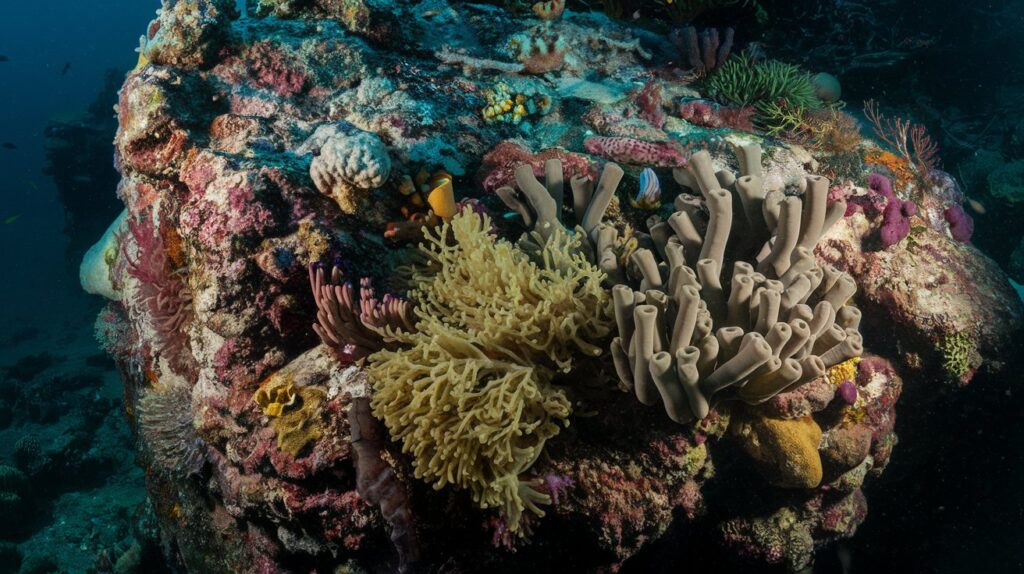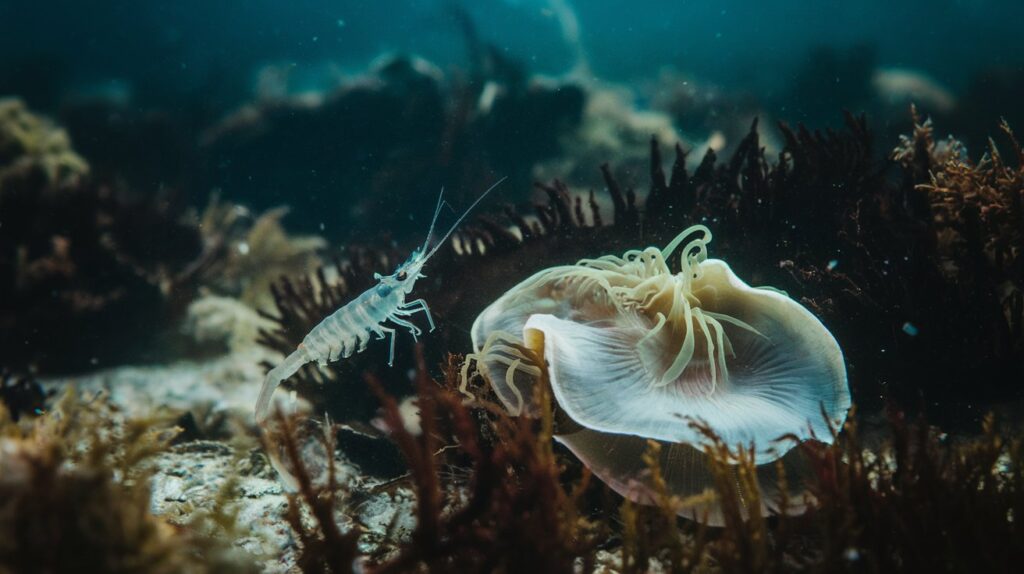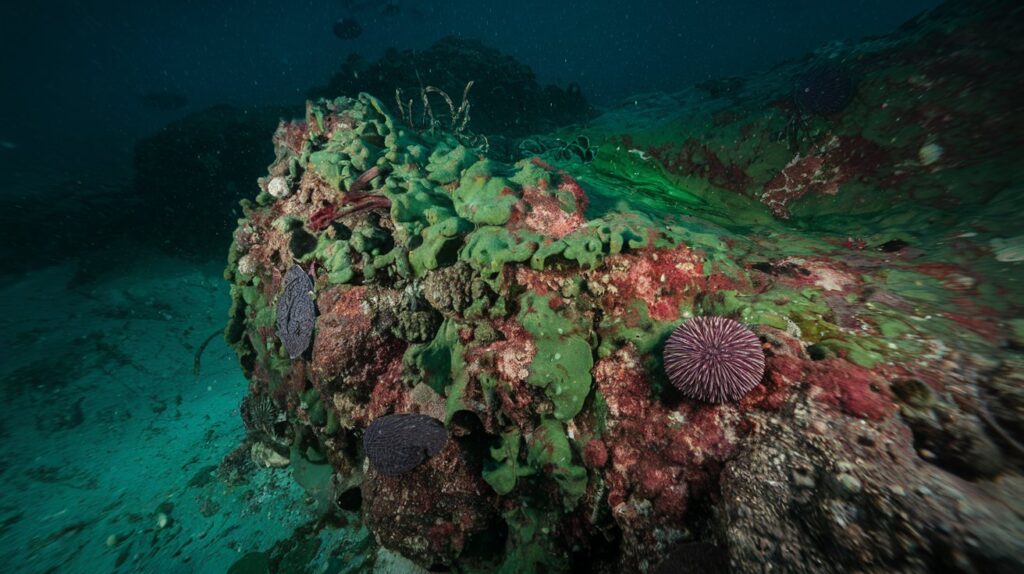
The benthic zone, a term derived from the Greek word “benthos,” refers to the lowest ecological region of a body of water, including the ocean floor, lakebeds, and riverbeds. This underwater realm is a world like no other, hosting a diverse array of organisms that have adapted to life in extreme environments. From the shallow coastal waters to the deepest ocean trenches, the benthic environment is vital to the health of marine ecosystems and plays a crucial role in the global carbon cycle.
What Is the Benthic Zone?
The benthic zone extends from the intertidal areas, where the ocean meets the shore, down to the abyssal plains, which lie several thousand meters below the surface. It includes various subzones, such as the littoral, sublittoral, bathyal, abyssal, and hadal zones. Each of these areas is characterized by unique environmental conditions like pressure, temperature, light availability, and nutrient supply, creating distinct habitats for various species.
| Aspect | Details |
|---|---|
| Definition | The benthic zone is the ecological region at the lowest level of a body of water, such as the ocean floor, lakebeds, or riverbeds. |
| Etymology | Derived from the Greek word “benthos,” meaning “depth” or “bottom.” |
| Location | Extends from the shoreline (intertidal zone) to the deepest parts of oceans (hadal zone), including all sediments and surfaces on the bottom of a body of water. |
| Subzones | – Littoral (shore to depth of 200 meters) |
| – Sublittoral (up to the continental shelf) | |
| – Bathyal (depths of 200 to 4,000 meters) | |
| – Abyssal (depths of 4,000 to 6,000 meters) | |
| – Hadal (depths beyond 6,000 meters) | |
| Environmental Conditions | Varies by subzone; can include extreme conditions such as high pressure, low temperature, limited light, and unique chemical compositions. |
| Types of Organisms | Bacteria, algae, benthic invertebrates (e.g., worms, clams, crabs), corals, bottom-dwelling fish, and specialized deep-sea species. |
| Role in the Ecosystem | Supports marine biodiversity, contributes to nutrient cycling, acts as a habitat for various species, and plays a role in the global carbon cycle. |
| Characteristics | Composed of sedimentary layers that vary from soft mud to rocky surfaces; influenced by water currents, organic matter availability, and sunlight exposure. |
| Significance | Crucial for sustaining marine life, recycling nutrients, stabilizing sediments, and maintaining the overall health of marine and freshwater ecosystems. |
| Research Importance | Provides insights into unique adaptations of organisms, climate change impacts, and potential resources like medicines and minerals. |
Life in the Benthic Zone
The organisms living in the benthic zone, known as benthos, include a wide range of species, from microscopic bacteria and algae to larger creatures like crabs, sea stars, and corals. Some benthic organisms, such as polychaete worms and clams, burrow into the sediment, while others, like certain fish and sea cucumbers, live directly on the ocean floor.
Benthic communities are incredibly diverse and contribute to nutrient recycling, water filtration, and sediment stabilization. Many species are detritivores, feeding on organic matter that sinks to the bottom, while others are predators or filter feeders, capturing plankton from the water column. This complex web of life supports a wide range of marine organisms, including commercially important fish species.
Importance of the Benthic Ecosystem
The benthic ecosystem is crucial for several reasons:
- Biodiversity: The benthic zone is home to a vast array of species, many of which are still undiscovered. This biodiversity is essential for maintaining the overall health of marine ecosystems.
- Carbon Storage: The sediments in the benthic zone act as a significant carbon sink, helping to mitigate the effects of climate change by storing carbon that would otherwise contribute to atmospheric CO₂ levels.
- Nutrient Cycling: Benthic organisms play a key role in nutrient cycling, breaking down organic material and recycling nutrients back into the water column, supporting primary production.
- Economic Impact: Many species in the benthic zone are of economic importance, providing resources for fisheries, pharmaceuticals, and biotechnology.
Threats to the Benthic Environment
Despite its importance, the benthic zone faces several threats, including pollution, habitat destruction, overfishing, and climate change. Activities like deep-sea mining, bottom trawling, and oil drilling can cause significant damage to these fragile ecosystems. Additionally, warming ocean temperatures and acidification are altering the physical and chemical conditions of the benthic zone, posing further risks to its inhabitants.
Protecting the Benthic Zone
Efforts to protect the benthic environment include establishing marine protected areas (MPAs), promoting sustainable fishing practices, and conducting research to better understand these complex ecosystems. By preserving the benthic zone, we help maintain the balance of marine life and ensure the continued health of our oceans.

Conclusion
The benthic zone is a vital, yet often overlooked, part of our planet’s marine environment. Understanding its significance and the life it supports is crucial for the conservation of our oceans. As we explore the depths of the benthic zone, we uncover more about the mysteries of the ocean and the delicate balance that sustains it.
By focusing on the benthic zone and its unique ecosystems, we can better appreciate the complexity of life beneath the waves and the need to protect these vital underwater habitats.

| Category | Information |
|---|---|
| Definition | The benthic zone is the lowest ecological region in a body of water, including ocean floors, lakebeds, and riverbeds. |
| Subzones | Littoral (coastal), Sublittoral, Bathyal (continental slope), Abyssal (deep ocean floor), and Hadal (deepest trenches). |
| Types of Organisms | Microscopic bacteria, algae, polychaete worms, clams, crabs, sea stars, corals, fish, sea cucumbers, and other benthic organisms. |
| Habitats | Varying from shallow coastal areas to deep-sea environments; characterized by diverse conditions such as pressure, temperature, and light availability. |
| Ecological Importance | Supports biodiversity, aids in nutrient cycling, acts as a carbon sink, stabilizes sediments, and provides habitats for marine organisms. |
| Economic Importance | Source of resources for fisheries, pharmaceuticals, and biotechnology; important for tourism and coastal protection. |
| Threats | Pollution, habitat destruction, overfishing, deep-sea mining, bottom trawling, oil drilling, ocean warming, and acidification. |
| Protection Efforts | Marine Protected Areas (MPAs), sustainable fishing practices, minimizing pollution, and research on benthic ecosystems. |
| Role in Carbon Cycle | Sediments in the benthic zone store carbon, helping to mitigate climate change by acting as a carbon sink. |
| Interesting Facts | Many species in the benthic zone are undiscovered; some can survive extreme conditions, including high pressure, low temperatures, and low light. |
Important Point
NO. | Important Points |
1. | |
2. | |
3. | |
4. |
FAQ: Benthic – Exploring the Depths of Oceanic Life
What is the benthic zone?
The benthic zone refers to the lowest ecological region in a body of water, including the ocean floor, lakebeds, and riverbeds. It ranges from shallow coastal waters to the deepest parts of the ocean, comprising various subzones like littoral, bathyal, abyssal, and hadal zones.
What types of life are found in the benthic zone?
The benthic zone hosts a diverse array of organisms, from microscopic bacteria and algae to larger creatures like crabs, sea stars, corals, and fish. Some organisms live on the ocean floor, while others burrow into the sediments or feed on organic material that sinks from the upper layers of water.
Why is the benthic ecosystem important?
The benthic ecosystem is crucial because it supports biodiversity, contributes to carbon storage, aids in nutrient cycling, and has significant economic value. It plays a vital role in maintaining the health of marine ecosystems and mitigating climate change.
What are the main threats to the benthic environment?
The benthic zone faces threats from human activities such as pollution, habitat destruction, overfishing, deep-sea mining, bottom trawling, and oil drilling. Additionally, climate change impacts like ocean warming and acidification pose serious risks to these fragile ecosystems.
How can we protect the benthic zone?
Protecting the benthic environment involves establishing marine protected areas (MPAs), promoting sustainable fishing practices, minimizing pollution, and conducting research to better understand these ecosystems. Conservation efforts are vital to maintaining the balance of marine life and ensuring the health of our oceans.
How does the benthic zone contribute to the global carbon cycle?
The benthic zone contributes to the global carbon cycle by acting as a significant carbon sink. The sediments in this zone store carbon that would otherwise be released into the atmosphere as CO₂, helping to mitigate the effects of climate change.
Feel free to let me know if you’d like more questions added or specific details emphasized!
